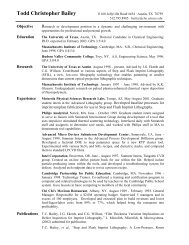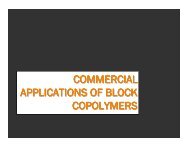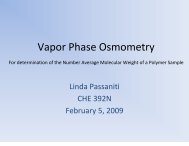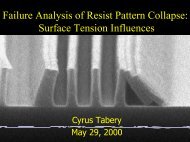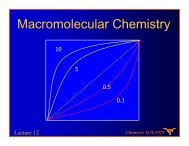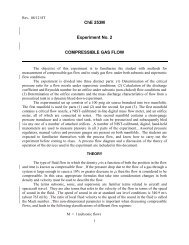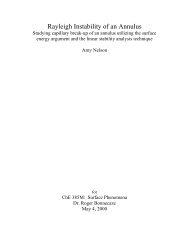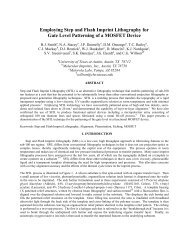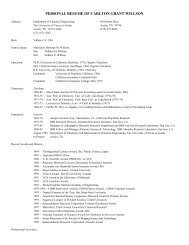Asymmetric fluid-structure dynamics in nanoscale imprint lithography
Asymmetric fluid-structure dynamics in nanoscale imprint lithography
Asymmetric fluid-structure dynamics in nanoscale imprint lithography
- No tags were found...
You also want an ePaper? Increase the reach of your titles
YUMPU automatically turns print PDFs into web optimized ePapers that Google loves.
3.2.4 Force Sens<strong>in</strong>g SystemIn order to characterize the forces dur<strong>in</strong>g the squeez<strong>in</strong>g or separationprocess, dynamic forces must be measured <strong>in</strong> real-time. Force sensors are placed<strong>in</strong> series with the DC Mike actuators and coupled to the flexure r<strong>in</strong>g via universaljo<strong>in</strong>ts to prevent edge load<strong>in</strong>g or bend<strong>in</strong>g moments. Consistent with the activestage design, these force sensors must be stiff <strong>in</strong> the lateral direction.PCB Piezotronics 208C02 piezoelectric quartz force sensors were usedto obta<strong>in</strong> force data. These piezoelectric force sensors can be used for dynamicforce measurements provid<strong>in</strong>g a fast response <strong>in</strong> both compression and tension.These sensors have a dynamic range of ±450 N, compression and tension.Furthermore, the stiffness of the sensors is comparable to solid steel, k = 1×10 9N/m.3.3 IMPLEMENTED DESIGNThe active stage k<strong>in</strong>ematics or RPU stage is similar to the ideal RPBstage, which has been thoroughly analyzed us<strong>in</strong>g screw system theory. Figures3.8 and 3.9 show the active stage system prototype. This test bed can be used tostudy the effect of the etch barrier on the orientation alignment for passive,selectively compliant stages. Separation of the template from the UV-exposedetch barrier can also be studied us<strong>in</strong>g the active stage.49



